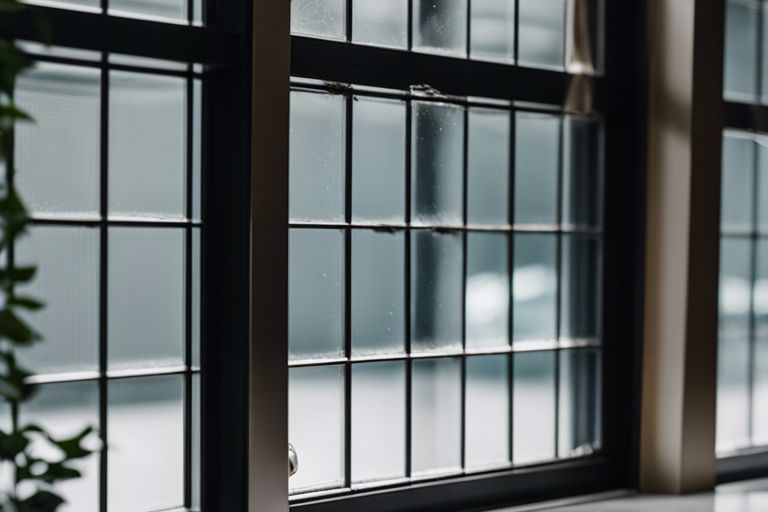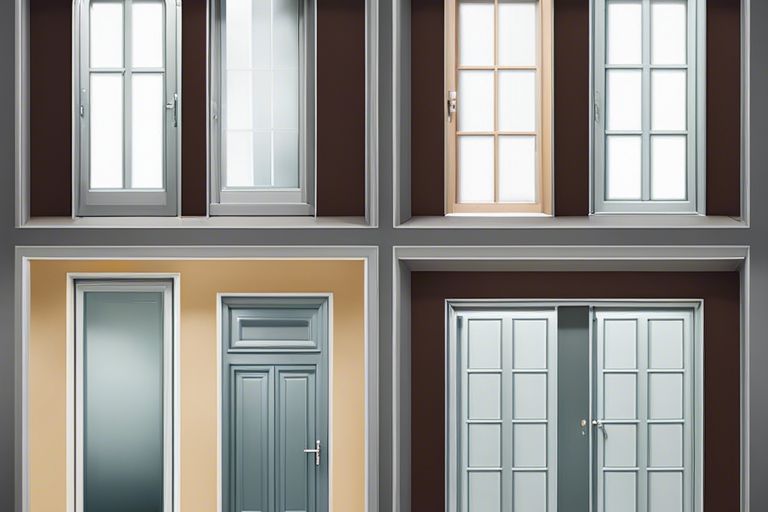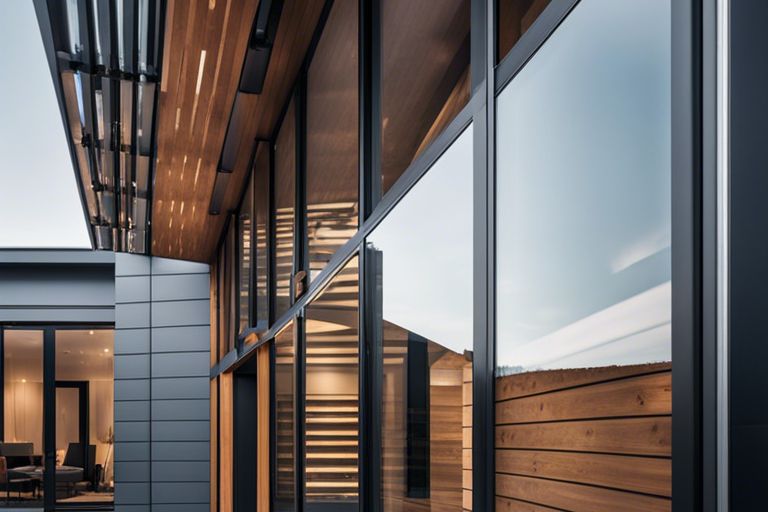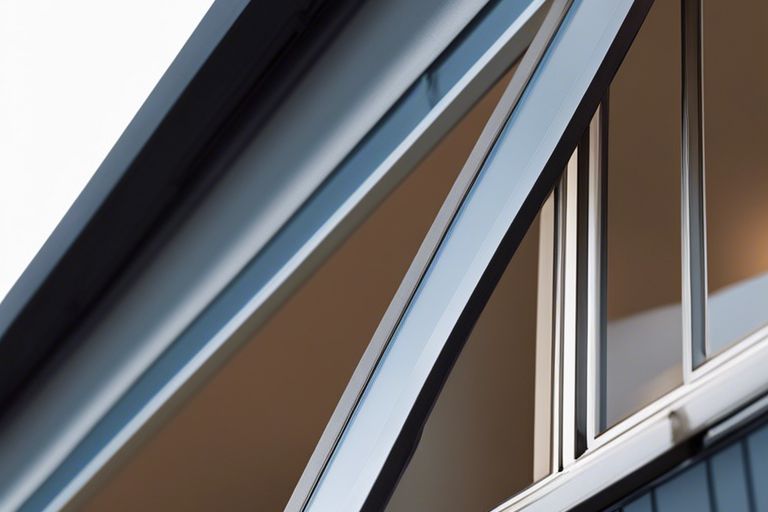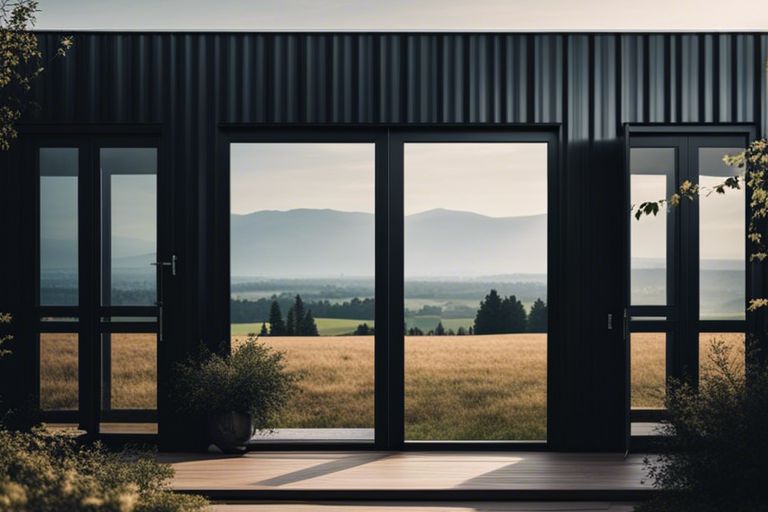In sustainable building design, flat rooflights play a crucial role in maximising natural daylight, improving energy efficiency, and enhancing the overall aesthetics of a building. By allowing an abundance of natural light to penetrate indoor spaces, flat rooflights reduce the reliance on artificial lighting, resulting in significant energy savings. Furthermore, they contribute to the wellbeing of occupants by creating a brighter and more inviting environment. However, improper installation or design of flat rooflights can lead to potential water leakage issues, which can compromise the building’s structural integrity and indoor air quality. It is essential to consider the placement, size, and quality of flat rooflights to ensure they are both functional and sustainable in the long term.
Key Takeaways:
- Energy Efficiency: Flat rooflights help to maximise natural light, reducing the need for artificial lighting and lowering energy consumption.
- Passive Ventilation: They can be designed to facilitate natural ventilation, promoting air circulation and improving indoor air quality without the need for mechanical systems.
- Thermal Performance: Good quality flat rooflights with thermal breaks and high-performance glazing can enhance insulation, reducing heat loss and improving overall building energy efficiency.

Advantages of Flat Rooflights in Sustainable Design
Energy Efficiency and Thermal Performance
Flat rooflights play a crucial role in enhancing the energy efficiency and thermal performance of buildings. By allowing natural light to flood into the interior spaces, rooflights reduce the need for artificial lighting during the day, thereby decreasing energy consumption. Additionally, well-insulated flat rooflights help prevent heat loss in winter and reduce heat gain in summer, contributing to overall energy savings.
Furthermore, the design of flat rooflights can incorporate advanced glazing technologies that enhance thermal performance by reducing heat transfer. This not only improves the comfort of the indoor environment but also minimises the reliance on heating and cooling systems, leading to lower energy bills and a smaller carbon footprint.
Natural Lighting and Health Benefits
One of the key advantages of flat rooflights in sustainable design is their ability to maximise natural light penetration into buildings. Natural light not only creates a more pleasant and inviting atmosphere but also supports the circadian rhythms of occupants, promoting better sleep patterns and overall well-being. Additionally, exposure to natural light has been linked to increased productivity and performance in work and learning environments.
Moreover, studies have shown that access to natural light can help reduce stress levels, improve mood, and enhance concentration. By incorporating flat rooflights in building design, designers can create spaces that not only benefit the environment but also contribute to the health and well-being of the occupants.
Flat Rooflights Materials and Innovation
When it comes to sustainable building design, the materials used play a crucial role in achieving energy efficiency and reducing the environmental impact of a structure. In the case of flat rooflights, choosing the right materials and embracing innovation are key factors in enhancing the overall sustainability of a building.
Advances in Glazing Technology
Advances in glazing technology have revolutionised the way flat rooflights function within a building. From improved thermal performance to enhanced durability, modern glazing options offer a range of benefits that contribute to energy efficiency and occupant comfort. Low-emissivity coatings, gas-filled cavities, and multiple glazing layers are just some of the innovations that help to reduce heat loss, minimise solar heat gain, and enhance overall insulation.
Furthermore, developments in self-cleaning and solar-reflective glazing materials have improved maintenance requirements and increased the lifespan of flat rooflights. By incorporating these technologies, architects and builders can design more sustainable structures that promote energy conservation and indoor well-being.
Eco-friendly Materials for Rooflights
Eco-friendly materials for rooflights are becoming increasingly popular in sustainable building design. Materials such as recycled glass, polycarbonate, and timber offer environmentally friendly alternatives to traditional glazing materials. By choosing these sustainable options, builders can reduce their carbon footprint and support the use of recyclable resources in construction projects.
In addition, the development of photovoltaic-integrated rooflights allows for renewable energy generation within the building envelope. By harnessing solar power through rooflights, it is possible to offset energy consumption and contribute to a more sustainable energy mix. These innovative solutions demonstrate the potential for flat rooflights to not only enhance natural light provision but also actively contribute to the overall sustainability of a building.
Integration with Renewable Energy Systems
Flat rooflights play a crucial role in sustainable building design by seamlessly integrating with renewable energy systems. By incorporating rooflights into the building, designers can maximise the efficiency of renewable energy sources and create environmentally-friendly structures.
Synergy with Solar Panels
The installation of flat rooflights alongside solar panels is a perfect example of how these two elements can work together synergistically. Rooflights provide natural light, reducing the need for artificial lighting during the day and lowering energy consumption. This, in turn, enhances the overall performance of solar panels by complementing their energy generation capabilities.
Moreover, the combination of flat rooflights and solar panels not only reduces the environmental impact of the building but also promotes energy self-sufficiency. This integration allows for the generation and consumption of clean energy on-site, contributing to a more sustainable and cost-effective building design.
Other Renewable Systems Compatible with Rooflights
In addition to solar panels, flat rooflights can be compatible with various other renewable energy systems such as wind turbines and rainwater harvesting systems. The versatility of rooflights enables them to work in harmony with these systems, further enhancing the eco-friendly features of the building.
For instance, by incorporating rooflights with a rainwater harvesting system, designers can utilise natural light to illuminate the collection tanks and reduce the energy needed to pump and treat water. This combination not only conserves water but also minimises the building’s reliance on external energy sources, promoting sustainability in building design.
Flat rooflights offer a range of possibilities for integrating with different renewable energy systems, providing designers with innovative solutions to enhance the sustainability and efficiency of buildings.
Installation and Maintenance Considerations
Best Practices for Installing Flat Rooflights
When it comes to installing flat rooflights in sustainable building design, there are key best practices that should be followed to ensure optimal performance. Firstly, it is vital to hire experienced professionals who have expertise in fitting rooflights to prevent any issues or leaks. Proper sealing and insulation are crucial to maintain the energy efficiency of the building.
Additionally, careful consideration of the placement of flat rooflights is essential to maximise natural light while avoiding overheating or glare. Working closely with architects and designers during the planning stages will help in achieving the desired balance between aesthetics and functionality.
Longevity and Maintenance of Rooflights in Green Buildings
Ensuring the longevity and proper maintenance of rooflights in green buildings is paramount for sustainable design. Regular cleaning and inspection of rooflights is necessary to prevent dirt and debris build-up, which can hinder the performance of the natural lighting. Proper maintenance schedules should be established to address any issues promptly and ensure the longevity of the rooflights.
Investing in high-quality materials for rooflights is essential for their longevity in green buildings. Opting for durable, energy-efficient glazing and robust framing will not only enhance the performance of the rooflights but also reduce the need for frequent replacements, contributing to the overall sustainability of the building.
Proper maintenance is critical to maximise the lifespan of rooflights in green buildings. Neglecting regular cleaning and inspections can lead to decreased performance and potential structural issues, impacting the overall sustainability of the building.

Design Considerations and Challenges
When incorporating flat rooflights into sustainable building design, architects must consider various factors to ensure both functionality and aesthetic appeal. From architectural aesthetics to potential drawbacks, there are several considerations and challenges that need to be addressed during the design process.
Architectural Aesthetics of Flat Rooflights
The use of flat rooflights in sustainable building design can significantly enhance the architectural aesthetics of a space. These sleek and modern fixtures allow natural light to flood into the interior, creating a bright and airy atmosphere. The minimalist design of flat rooflights also adds a contemporary touch to the overall architectural style, making them a popular choice among architects and designers.
However, architects must carefully consider the placement and size of flat rooflights to ensure they complement the building’s overall design and functionality. Proper integration of these fixtures into the architecture can elevate the visual appeal of the space while also maximising natural light intake.
Addressing Potential Drawbacks and Solutions
Despite their numerous benefits, flat rooflights come with potential drawbacks that need to be addressed in the design phase. One common challenge is the risk of leakage and water ingress, especially in areas prone to heavy rainfall. To mitigate this issue, architects can opt for high-quality, weather-resistant materials and incorporate proper drainage systems into the design.
Furthermore, architects need to consider the impact of excessive heat gain and glare caused by direct sunlight exposure through flat rooflights. To address this issue, strategically placing shading devices or using low-emissivity glass can help regulate temperature and minimise glare, creating a more comfortable indoor environment.
Addressing these potential drawbacks requires careful planning and expert knowledge to ensure that flat rooflights not only enhance the aesthetic appeal of the building but also contribute to its sustainability and occupant comfort.

The Role of Flat Rooflights in Sustainable Building Design
Flat rooflights play a significant role in sustainable building design by maximizing natural light, reducing the need for artificial lighting and lowering energy consumption. They also help regulate internal temperatures, decreasing the reliance on heating and cooling systems. Additionally, rooflights can enhance the overall aesthetics of a building and promote occupant well-being by providing ample natural daylight. Incorporating flat rooflights into architectural designs can not only improve the environmental performance of a building but also create a more comfortable and pleasant indoor environment. Their contribution to sustainability and energy efficiency makes them a valuable element in modern construction practices.
As a final point, flat rooflights are essential components in sustainable building design, offering a myriad of benefits that promote energy efficiency, occupant comfort, and architectural appeal.
FAQ
Q: What are flat rooflights?
A: Flat rooflights are sleek and modern skylights designed to sit flush with the roofline, allowing natural light to flow freely into interior spaces.
Q: How do flat rooflights contribute to sustainable building design?
A: Flat rooflights enhance sustainable building design by maximising natural light, reducing the need for artificial lighting and lowering energy consumption.
Q: What are the benefits of incorporating flat rooflights in sustainable building design?
A: The benefits of using flat rooflights include improved indoor environment quality, energy efficiency, reduced carbon footprint, and overall occupant well-being.

